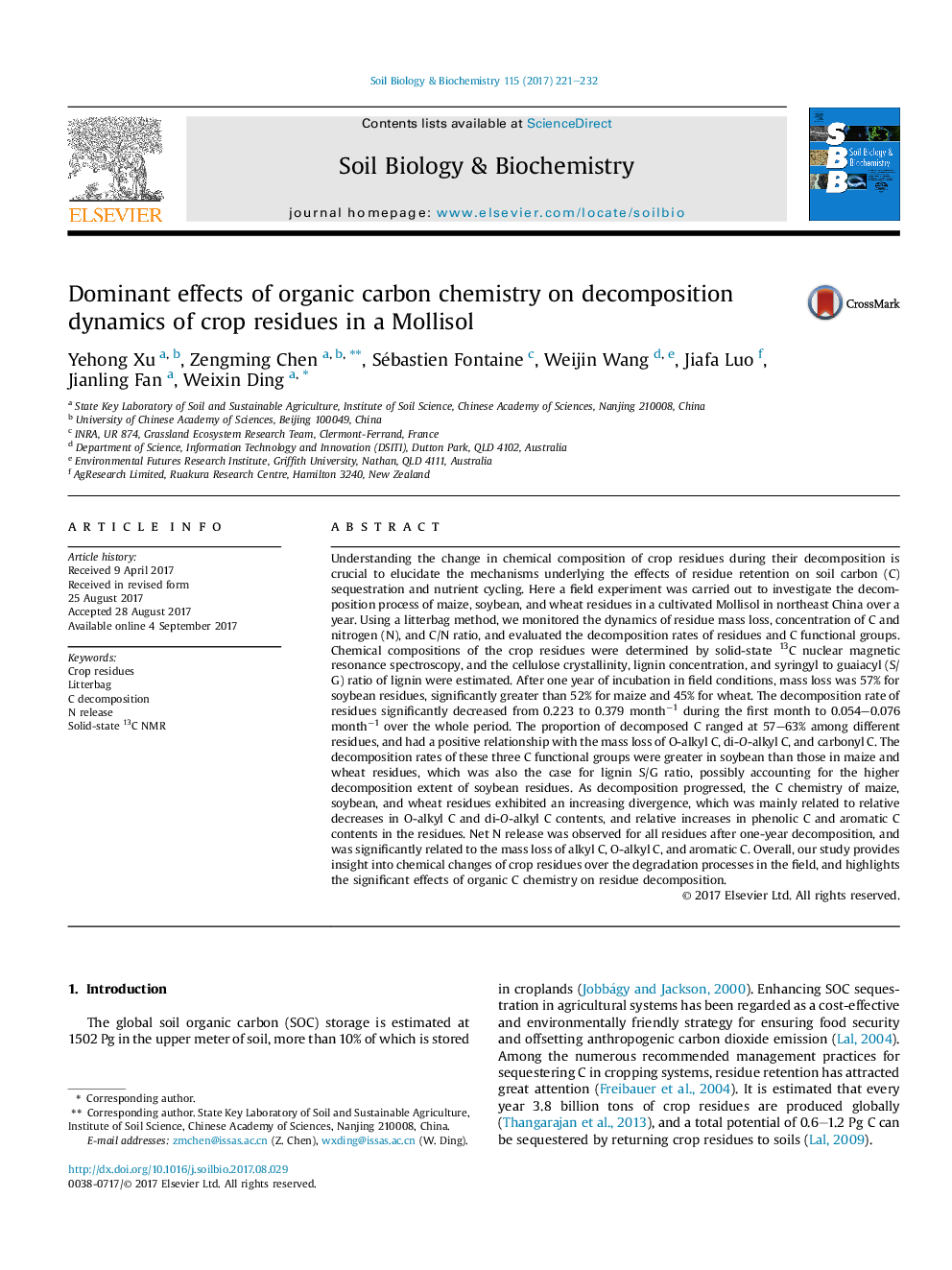| کد مقاله | کد نشریه | سال انتشار | مقاله انگلیسی | نسخه تمام متن |
|---|---|---|---|---|
| 5516243 | 1542569 | 2017 | 12 صفحه PDF | دانلود رایگان |
- Crop residue decay was studied by litterbag and C chemistry was analyzed by 13C NMR.
- Soybean residues had the highest decomposition rate, followed by maize and wheat.
- Decomposition was mainly due to losses of O-alkyl C, di-O-alkyl C, and carbonyl C.
- C chemistry of these crop residues exhibited an increasing divergence with time.
- Net N release was observed for all crop residues after one-year decomposition.
Understanding the change in chemical composition of crop residues during their decomposition is crucial to elucidate the mechanisms underlying the effects of residue retention on soil carbon (C) sequestration and nutrient cycling. Here a field experiment was carried out to investigate the decomposition process of maize, soybean, and wheat residues in a cultivated Mollisol in northeast China over a year. Using a litterbag method, we monitored the dynamics of residue mass loss, concentration of C and nitrogen (N), and C/N ratio, and evaluated the decomposition rates of residues and C functional groups. Chemical compositions of the crop residues were determined by solid-state 13C nuclear magnetic resonance spectroscopy, and the cellulose crystallinity, lignin concentration, and syringyl to guaiacyl (S/G) ratio of lignin were estimated. After one year of incubation in field conditions, mass loss was 57% for soybean residues, significantly greater than 52% for maize and 45% for wheat. The decomposition rate of residues significantly decreased from 0.223 to 0.379 monthâ1 during the first month to 0.054-0.076 monthâ1 over the whole period. The proportion of decomposed C ranged at 57-63% among different residues, and had a positive relationship with the mass loss of O-alkyl C, di-O-alkyl C, and carbonyl C. The decomposition rates of these three C functional groups were greater in soybean than those in maize and wheat residues, which was also the case for lignin S/G ratio, possibly accounting for the higher decomposition extent of soybean residues. As decomposition progressed, the C chemistry of maize, soybean, and wheat residues exhibited an increasing divergence, which was mainly related to relative decreases in O-alkyl C and di-O-alkyl C contents, and relative increases in phenolic C and aromatic C contents in the residues. Net N release was observed for all residues after one-year decomposition, and was significantly related to the mass loss of alkyl C, O-alkyl C, and aromatic C. Overall, our study provides insight into chemical changes of crop residues over the degradation processes in the field, and highlights the significant effects of organic C chemistry on residue decomposition.
Journal: Soil Biology and Biochemistry - Volume 115, December 2017, Pages 221-232
